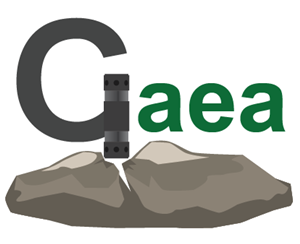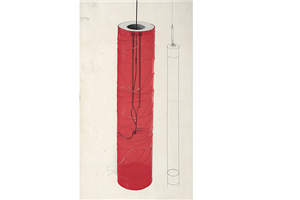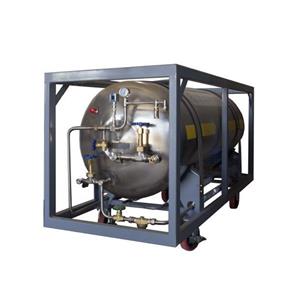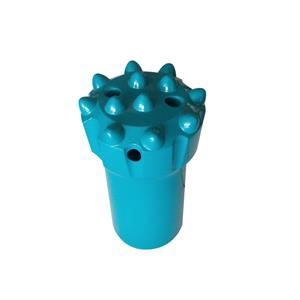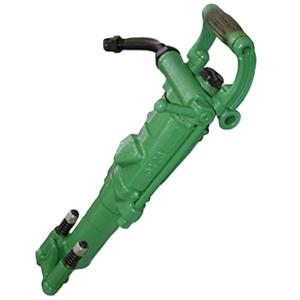Ways to improve the life of rock drilling tools
Failure analysis of rock drilling tools:
In recent years, my country's rock drilling tools have developed rapidly, and a series of products have been formed with their own characteristics, such as column tooth drill bits, carbide integral drill bits, extremely tough rock drill bits, K610 carbide, Ni-Cr-Mo ultra-high strength drill tool steel, ∅38 corrugated and trapezoidal drill rods, etc., with significantly improved quality and life. However, the quality of mass production is still unstable, and the drill tools fail early. The reasons are analyzed as follows:
1. Drill bit
The damage forms of the drill bit mainly include abnormal wear and normal wear such as fragments, broken teeth, internal tooth removal, drill body bulging, and fracture. my country has used old-style straight drill bits for a long time. After scrapping, the average residual blade in the middle of the alloy piece is more than 12mm, and the normal rate is less than 5%. Bulging, inverted cone wear, broken waist, cracking and falling fragments in hard rocks often account for more than 80% of the drill bit usage. The main reason is that the blade wing of the drill bit is too thin, and the relative wing thickness is only 1.16. It is not wear-resistant, has fast radial wear, and has poor geometric shape stability. The blade steel body has insufficient clamping force on the alloy sheet, which causes the sheet to fall off, the blasthole is not round, the rotation resistance is large, and the wear of the drill blade is aggravated. The old straight-shaped drill head has a taper hole depth of 32mm, and the drill tip insertion depth is less than 24mm. The taper hole is shallow. Under the action of high-frequency and high-impact load, the positive pressure per unit area of the trouser wall will easily exceed the ultimate strength of the drill head steel body and cause trouser expansion or trouser cracking. First, starting from the inner wall of the trouser opening, tangential tensile residual deformation is generated, causing the trouser wall to expand, forming a trumpet shape, loose connection, and trouser fall off. When the hardness of the trouser body steel is too high to cause trouser cracking, the powder discharge system is poor, and repeated crushing occurs, which increases the wear of the drill head.
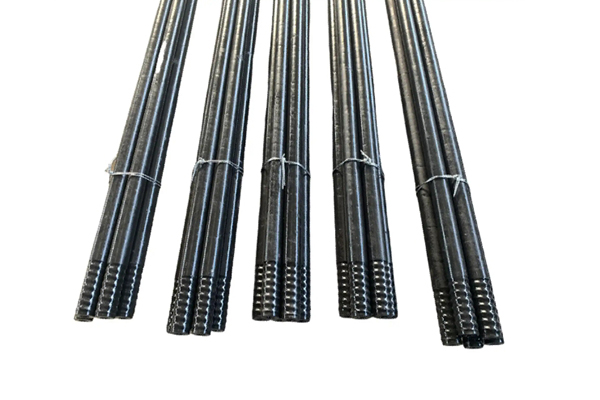
The main forms of damage to the ball tooth drill head are edge tooth fall-off, broken tooth fall-off, trouser cracking, cap removal, and waist breakage. According to the statistics of failure of Swedish ∅48mm ball-tooth drill bits drilled with COP1038HD hydraulic rock drills at China University of Geosciences, 37% of the teeth were lost, 28.3% of the teeth were broken, and 13.2% of the teeth were broken. When drilling holes in hard granite with 7655 pneumatic rock drills, 22.7% of the teeth were lost, 35.4% of the teeth were broken, and 26.4% of the teeth were broken. Field tests show that the teeth are lost and broken. This is because the teeth are subjected to eccentric stress, which is extremely unevenly distributed, and the teeth are subjected to different radial circumferential pressures, which makes the teeth bear stress and the teeth are subjected to different radial circumferential pressures, which makes the teeth bear stress poorly and cause broken teeth. Due to the high hardness of the drill bit base, the interference fit between the teeth and the holes remains unchanged. When fixing, due to the high hardness of the tooth hole, the elastic-plastic deformation is poor. When the teeth are fixed under pressure, micro cracks are easily generated. As the rock is drilled at a faster speed, they expand in different directions, resulting in irregular crushing of the alloy teeth. As the number of impacts on the column tooth drill bit increases, the plastic deformation of the tooth hole wall continues to increase, causing a bell mouth to appear at the tooth hole mouth, resulting in a decrease in the force of fixing the teeth and easy to cause tooth stripping. In addition, due to the small interference between the tooth holes, the low hardness of the drill bit body also aggravates the tooth stripping. Since cemented carbide is a brittle material, the inevitable pores, inclusions and other micro crack sources inside it will continue to expand and break during the process of millions of impacts as the rock is drilled. The influence of the high hardness drill bit body on the cemented carbide teeth is much greater than that of the medium and low hardness drill bit bodies. The lower the hardness of the drill bit body, the smaller the influence of the pressure force on the performance of the cemented carbide. However, reducing the hardness of the drill bit body will lead to insufficient force of fixing the teeth and tooth stripping. In addition, it is related to factors such as the material, flux performance, welding operation and usage method.
More than 80% of the fractures of the drill bit steel body occur at the boundary between the end face of the drill tip and the bottom of the drill pants, and the fracture of the column tooth drill bit occurs along the bottom interface of the tooth hole. From the transmission law of stress waves, it can be seen that the area between the end face of the drill tip and the bottom of the pants is the area where the wave resistance changes suddenly. The fatigue fracture caused by stress wave reflection and cross-section mutation is often aggravated by factors such as improper steel selection, unreasonable geometric structure parameter design, inappropriate manufacturing process selection, and improper usage methods.
2. Drill rod
Drill rods are subjected to comprehensive alternating stresses mainly composed of impact stress, bending stress, and corrosion stress during operation. Therefore, the drill rod is required to have high fatigue strength, impact resistance, corrosion resistance, and low notch sensitivity and crack growth rate. The damage forms of drill rods include insufficient hardness of the handle end of the small drill rod causing top heaping; excessive hardness causing top explosion; thread wear of the connecting rod; and fatigue fracture and brittle fracture.
Drill rod fracture is the main failure form. Fatigue fracture is the cracks caused by the accumulation of damage under repeated stress. It usually originates from the weak parts of the material, such as non-metallic inclusions, bubbles, white spots, scars, decarburization, corrosion cracks inside the material; poor material and heat treatment, such as the carburized drill rod core is too hard, poor quenching produces cracks and cracks at the tail handle end; due to design reasons such as improper drill rod thread shape, poor fitting of sleeve and thread, poor fitting of cone and tail handle, cracks and breakage; improper use such as hammer marks, poor lubrication of joints, and corrosion of drill steel, etc., which cause cracks and breakage. As well as the expansion of these cracks, fatigue fracture of the drill rod occurs after a long development process. The treatment of fatigue fracture of drill rod can be divided into three stages: under the action of cyclic stress, some parts of the drill rod produce plastic deformation in the form of slip, and micro cracks appear, which gradually develop into macro cracks under the repeated action of cyclic stress; in the second stage, the effective area of the drill rod is reduced with the development of macro cracks; in the third stage, when the cross section of the drill rod is reduced to a stress equivalent to the tensile strength, it breaks. The fatigue fracture of the connecting rod drill rod mostly occurs at the root of the thread, and the crack develops from the outer surface to the inside; the fatigue fracture of the small drill rod, the internal fatigue crack is generated on the surface of the drill rod water hole and gradually develops outward, and the external fatigue crack is generated on the surface of the drill rod and gradually develops inward. The fatigue fracture of the small needle rod mostly occurs within 300~400mm before the collar.
In the process of rock drilling in mines, a small number of broken drill rods have no fatigue marks on the fracture surface, generally showing a bright crystal surface state, which is often called brittle fracture. This is mainly due to defects in the drill rod, such as inclusions, indentations, hammer marks or excessive changes in the cross section, as well as the bell mouth produced during forging, improper heat treatment and other factors, resulting in low strength of the drill rod, poor plasticity or large stress concentration, which makes the crack develop extremely quickly and easily cause early brittle fracture of the drill rod.
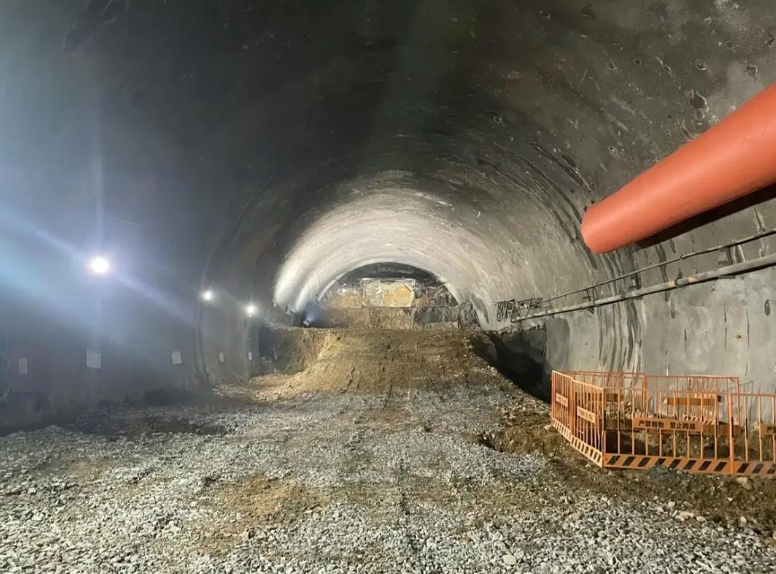
Ways to improve the life of the drill tool
1. Improve the design quality
Determining reasonable structural parameters and continuously developing new varieties are the prerequisites for improving the life of the drill tool. For many years, the old-style straight drill bit has been used. The main reason for its short life is the unreasonable product design, which is manifested in the small relative wing thickness, shallow cone hole, poor powder discharge effect, unstable geometric shape, easy to produce early cylindrical deformation, and unreasonable geometric parameters of the hard metal sheet. Therefore, it is difficult to improve on the basis of the original design, and the old-style straight drill bit should be eliminated as soon as possible.
Blade drill bits widely use radially arranged whole-piece straight, three-blade, cross-shaped and x-shaped drill bits. The more blades the drill bit has, the higher the wear resistance. The cross-shaped drill bit has a 30~50% higher grinding footage than the straight-shaped drill bit, but the manufacturing and grinding are complicated and costly. The relative wing thickness is preferably 1.6~2.2, and the cross section of the powder drainage groove and the total area of the water hole cross section must be equal to or greater than the cross section of the drill rod center hole. A 3-hole arrangement is often used, and the center hole diameter is slightly larger. The reasonable body structure is to have a 2°~3° clearance angle at the head, and a circular arc or cone transition with a curvature radius of R=30~80mm between the conical surface and the tail cylindrical surface of the extended trousers body. The small drill bit with a diameter less than 45mm is connected to the drill rod with a cone connection, and the drill bit with a diameter greater than 45mm is connected with a corrugated or composite trapezoidal thread. The rock drilling speed is inversely proportional to the square of the drill bit diameter. However, in order to use technology reasonably and improve the quality and life of the drill bit, the drill bit grinding frequency can be increased to 15 times. In order to reduce the radial wear of the drill bit, the contact area between the drill bit blade and the hole wall can be increased to make the powder discharge smooth, the gap angle of the alloy sheet can be reasonably determined, and the thickness of the alloy sheet can be appropriately increased.
The crown shape of the column tooth of the column tooth drill bit is mostly hemispherical. The rock drilling speed is high. When pressing into the rock, the tooth surface is relatively strong and durable under compressive stress. The size of the tooth diameter should consider sufficient tensile stress, firmness of the fixed teeth and the possibility of tooth arrangement. The number of teeth should consider effective rock breaking, possibility of tooth arrangement, sufficient strength and convenient re-grinding. From the failure analysis, it is known that the stress condition of the side teeth is poor, and the side teeth are broken and broken. The following measures can be taken to reduce the damage of the side teeth and extend the service life of the column tooth drill bit.
(1) Strengthen the side teeth and correctly select the tooth shape, tooth diameter and tooth height. The diameter of the middle teeth and side teeth is currently 9.65~9.95mm. The side teeth diameter can be increased to 10.65~10.95mm to enhance the impact strength and wear resistance, and the middle teeth diameter can be reduced to 8.65~8.95mm to facilitate the arrangement of side teeth and reduce costs.
(2) Appropriately reducing the side teeth inclination angle is conducive to improving the stress condition and enhancing the impact resistance of the side teeth. Foreign countries often use 30°~35° inclination angles, which can be reduced to 20°~25°, increasing the contact area between the outer surface of the side teeth and the rock, and is also conducive to the self-sharpening of the side teeth and improving the radial wear resistance of the drill bit. The middle teeth are slightly higher than the side teeth to facilitate centering and open up lateral free surfaces for the side teeth to improve rock breaking efficiency. For soft rocks with low radial abrasiveness, the inclination angle should be small.
(3) Correctly select the weld gap and the interference of the fixed teeth to increase the fixing force of the column teeth. When the interference is small, the tightening force is reduced. When the interference is slightly larger, scratches will appear in the tooth hole. If the tooth is further enlarged, it will not be pressed in. When it is too large, the tooth is easy to break, and sometimes the drill body will swell and break. If the surface roughness of the tooth hole is increased, the friction coefficient is increased to increase the tightening force, which is a feasible measure. Using a plastic nesting (commonly used H62Y copper material) as an intermediary, the nesting and the hole are transitionally matched, and the teeth are interference matched. When the teeth are cold pressed, the nesting is squeezed against each other under the action of the tooth fixing force, and the nesting undergoes plastic deformation and the rough surface of the hole teeth is wedged into each other, thereby increasing the bonding force (static friction) between the hole teeth and achieving a firm fixed tooth.
(4) The side teeth are selected from high-toughness cemented carbide and are subjected to hot isostatic treatment to effectively prevent broken teeth. Strengthening the drill bit steel body increases the abrasion resistance of the steel body.
(5) Reasonable tooth arrangement, increase the number of side teeth as much as possible, improve the powder discharge system, retain the front water hole and the large gap three groove two hole powder discharge system, high powder discharge efficiency, reduce repeated crushing of rock powder, reduce energy consumption and extend the service life of the drill bit.
Shallow hole rock drilling rods use B19, B22, B25 hexagonal hollow steel, which accounts for about 80~85% of the hollow steel usage; deep hole rock drilling rods use D32, D38, B25, B32, round or hexagonal hollow steel, accounting for 15~20%. Hexagonal drill rods have good rigidity, large powder discharge gap, and are easy to roll.
Improve the structure of the drill rod, such as the full thread drill rod proposed by Ingersoll Rand Company in the United States, which is processed by rolling forming method, surface hardening treatment, improve toughness and wear resistance, large helix angle, good self-locking, and easy disassembly and assembly. When the connecting end is worn, it can be cut off and chamfered and reused, which increases the service life by 3~4 times. The SPEEDROD drill rod of Samdvik Company in Sweden adopts a threaded connecting rod, cancels the connecting rod sleeve, eliminates the clearance of the joint surface, greatly improves the connection alignment and rigidity, maintains the linearity of the drilling hole, and saves energy.
Improving the appearance quality and packaging quality of the drill tool, designing the appearance shape and packaging structure well, can effectively protect the drill tool, beautify the drill tool, and extend the service life of the drill tool.
2. Select high-quality materials
The selection of drill tool materials should consider toughness and wear resistance, good rigidity and wear resistance, sufficiently high fatigue strength, low fatigue notch sensitivity, high ability to clamp alloy sheets, and certain corrosion resistance. Good process performance, easy cutting, good hardenability and hardenability, good weldability. It is in line with national conditions, low price, and try to use less Ni and Cr. The results of the drill tool steel selection method based on fuzzy mathematics are recommended as follows:
(1) 24SiMnNi²CrMo steel is a new steel type that imitates Swedish FF710 steel and has the best conventional mechanical properties, fracture properties, and comprehensive evaluation. The average life of the domestically produced ∅50 nine-tooth column drill bit in the Road Project is 715.2m/piece, and the maximum life is 901.4m/piece, which is close to the service life of the Swedish ∅48 column drill bit in the project of 760m/piece. It is also a good drill rod material. The average service life of the hydraulic trolley of the Mercury 300 hydraulic rock drill in Iron Mine is 152.4m/piece, and the service life of the drill tail is 609m/piece, which is 76% higher than the French 23CrNi³Mo drill tail life of 345m/piece;
(2) The average cumulative footage of the drill rod made of 40SiMnMoV steel is 1225.4m, which is close to the foreign level;
(3) The service life of the small drill rod made of 55SiMnMo is close to the level of 250m of the Swedish 95CrMo small drill rod;
(4) The average service life of the drill rod made of 35SiMnMoV can reach 300m/piece. The above steel is heat treated by quenching, tempering, annealing, normalizing, etc. to form bainitic steel with high fatigue strength and toughness.
For induction brazing fixed pieces and fixed teeth small and medium-sized drill bits, 40MnMoV is used as the drill bit body material. The service life of the ∅50 cross and column tooth corrugated thread drill bits produced is close to that of the Swedish drill bits. For the column tooth drill bits with hot embedded teeth, 45NiCrMoV steel is preferred.
The selection of cemented carbide materials must be adapted to the mechanical properties of the rock and the type of rock drill. Usually, cemented carbides with high cobalt content such as YJo and YG13C are used for extremely tough rocks and rock drills with large impact power; YJ¹, YK25, and YG11C are mostly used for hard rocks; YG8C and YJ² are used for medium-hard ore rocks; and YJ³ and YG6 are used for soft rocks. The linear expansion coefficient of the cobalt phase in cemented carbide is about 3 times that of tungsten carbide. The internal stress generated during rapid heating and cooling will cause the same interface to crack. Therefore, no matter in the process of manufacturing, welding and grinding, the sudden heating and cooling of cemented carbide should be avoided.
Silver-based solder is widely used in foreign brazing of drill tips. It has low melting point, little effect on the performance of steel body and cemented carbide, high welding strength and low welding stress. my country should carry out research and development to meet the needs of opening up foreign trade markets. At present, copper-based solders such as 105, 801, and SB-1 are mostly used based on rock drilling efficiency and service life.
